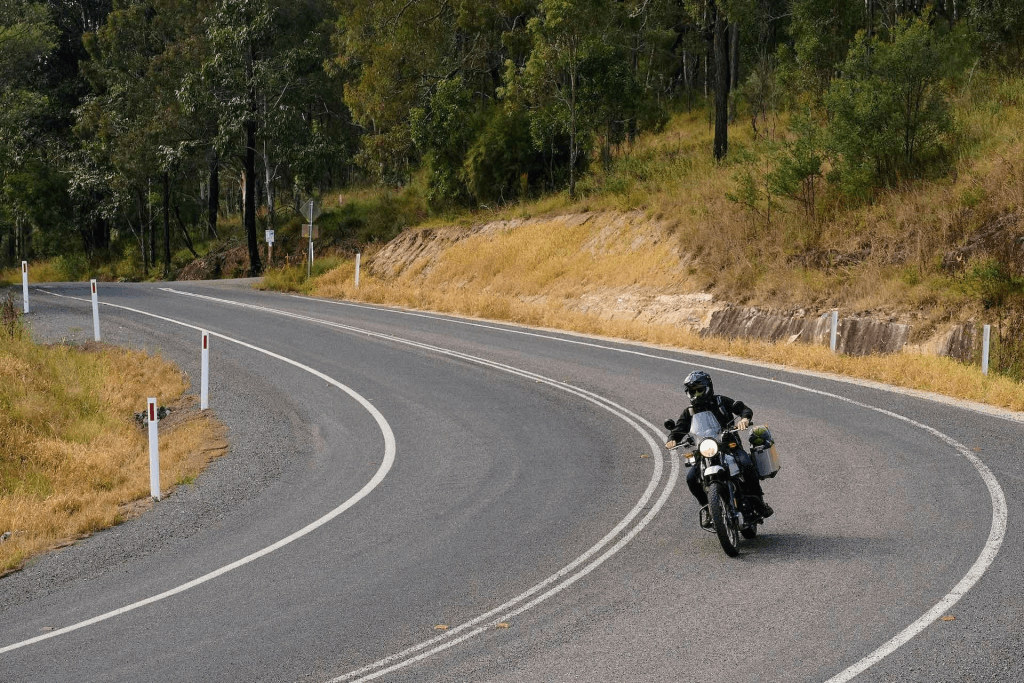Traveling by motorcycle and backpack is an exciting way to explore. It’s the freedom of the open road combined with the simplicity of backpacking. If you’re new to “moto-backpacking,” this guide will break down everything you need to know in simple terms. We’ll cover planning, packing light, essential gear, safety, and tips to make your first motorcycle adventure a smooth ride. Let’s gear up for your first two-wheeled journey!
Plan a Simple Adventure
For your first motorcycle backpacking trip, plan a route that isn’t too far or too remote. Choose a destination within a day’s ride or a weekend trip. This helps you get a feel for the experience without overwhelming yourself. Pick a few interesting stops or a campground a couple of hundred miles away, for example.
Budget for the Basics
One great thing about motorcycle backpacking is that it can be a budget-friendly option. You’ll likely spend less on gas than on a car trip, and if you camp, you save on lodging. Still, make a simple budget. Account for fuel, food, camping fees, or cheap motels, and a bit of fun money for things like national park entry fees or a hot meal on the road.
Check the Weather and Season
Timing can make or break a trip. Check forecasts for the areas you’ll ride through. Avoid planning in extreme weather until you have more experience. For your first trip, fair-weather riding is much more enjoyable. If you’re going to the mountains, remember it can get cold at night even in summer, so pack accordingly. If rain is in the forecast, have a rain plan.
Pack Light, Pack Smart
Motorcycle backpacking forces you to travel light, and that’s a good thing. With limited space, you’ll bring only what you truly need. Here’s how to pack efficiently without forgetting essentials:
Choose the Right Bag or Luggage
You can use a backpack, but many riders find it more comfortable to strap gear to the bike rather than wear a heavy pack while riding. Consider using saddlebags, a tail bag, or a dry bag tied to the seat. If you do wear a backpack, get one with chest and waist straps so it sits securely.
Strap It Down Securely
However you pack your gear, make sure everything is fastened tightly to the bike. Use bungee cords or, even better, adjustable straps with buckles to hold luggage in place. You do not want things shifting or falling off while you ride. If using a backpack, secure loose straps so they don’t flap or get caught.
Weight Distribution
Pack heavier items low and toward the center of the bike if possible. This keeps the motorcycle’s balance closer to normal. Too much weight up high or at the very back can make the bike feel wobbly. For example, if you have saddlebags, distribute weight evenly between them. If using one big bag on the rear, keep heavy tools or spare parts at the bottom of the bag.
Gear Up for Safety and Comfort
Your motorcycle itself and riding gear are key parts of the adventure. Proper gear keeps you safe and comfortable in varying conditions.
Motorcycle Checkup
Before you leave, do a basic pre-trip inspection on your bike. Check tire pressure and tire tread. Check the oil level and top up if needed. Test all lights. Make sure your mirrors are adjusted and tight. Ensure the chain is lubricated and at proper tension.
Helmet and Riding Gear
Always wear a quality helmet. For long trips, a full-face helmet or one with a visor is great because it protects you from wind, rain, and debris. Wear protective clothing: a sturdy jacket, durable pants, and gloves that cover your full hand.
Secure Your Gear and Bike
Consider how you’ll keep your belongings and bike secure when you’re not actively riding. Bring a padlock or small cable lock to secure your helmet or jacket to the bike if you leave them behind while sightseeing. If camping, you might padlock your saddlebags. It’s uncommon for someone to tamper with a bike, but it’s wise to take precautions, especially in public areas.
On the Road: Tips for a Smooth Ride
Now you’re packed and geared up. As you hit the road, keep these tips in mind to ensure an enjoyable and safe journey:
Take Breaks Often
Riding a motorcycle for hours is more tiring than driving a car. Plan to stop every hour or two, even if just to stretch and drink water. Use fuel stops as built-in breaks. When you stop, walk around a bit, roll your shoulders and neck to loosen up, and stay hydrated.
Stay Aware and Ride Defensively
As always, on a motorcycle, ride like others might not see you. On highways, avoid lingering in the blind spots of cars and trucks. Give plenty of following distance so you have time to react. Watch the road surface for hazards. With added weight on your bike, your braking distance may be a bit longer, so anticipate stops early. Keep your headlights on during the day for visibility.
Unfortunately, even cautious riders can be hit by inattentive drivers. If that happens, it’s important not only to document the scene and seek medical help but also to understand your legal timeframe for taking action. The statute of limitations for injuries varies 1 to 6 years, depending on the state, so don’t wait too long to explore your options.
Adjust to the Load
You will notice your bike handles a bit differently with luggage. It may feel heavier when turning or a little slower to accelerate and brake. This is normal. Ride within your comfort zone until you get used to it. If you approach twisty roads, take corners a touch more slowly than you might without gear. Strong winds can also affect a loaded bike more, so on windy stretches, keep a firm grip and be prepared for gusts.
Cassia Rowley is the mastermind behind advertising at The Bad Pod. She blends creativity with strategy to make sure ads on our site do more than just show up—they spark interest and make connections. Cassia turns simple ad placements into engaging experiences that mesh seamlessly with our content, truly capturing the attention of our audience.


